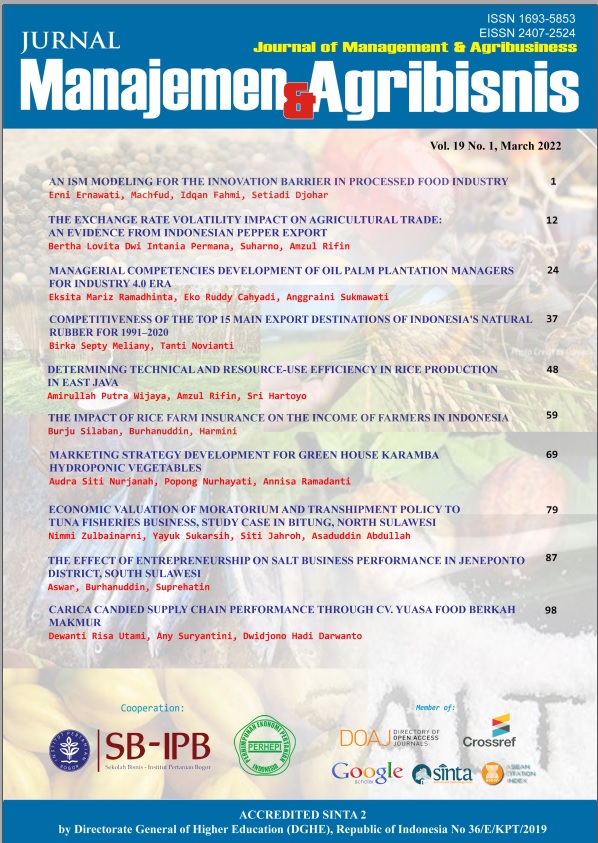Determining Technical and Resource-Use Efficiency in Rice Production in East Java
Abstract
This study aimed to determine the technical and resource-use efficiency of East Java. The secondary data were used from the Paddy Cultivation Household Survey ST2013 handled by BPS-Statistics Indonesia. The data was cross-sectional and were derived from ST2013 in 2014. The stochastic frontier analysis analyzed the factors that drive rice output and quantified rice production's technical efficiency. In contrast, the marginal value product-marginal factor cost (MVP-MFC) approach was used to quantify resource-use efficiency in rice production. The SFA indicated that these factors positively affect rice output except for seed, fertilizer, labor, and land utilization. However, other factors were considered apart from the land size, such as exaggerated land and labor advantage in production and bad seed and fertilizer utilization. Technical efficiency varies considerably among rice farmers, ranging from 1 percent to 100 percent, with an average of 89 percent. Their technical inefficiency was influenced by their group membership, irrigation, credit, education level, and farmer age - external farm insect pests. The government and the private sector are involved in the programs through farmer groups.
Keywords: agricultural production, allocative efficiency, resource-use efficiency, parametric frontier, ST2013, technical efficiency
Authors
Authors who publish with this journal agree to the following terms:
- Authors retain copyright and grant the journal right of first publication with the work simultaneously licensed under a Creative Commons Attribution License that allows others to share the work with an acknowledgement of the work's authorship and initial publication in this journal.
- Authors are able to enter into separate, additional contractual arrangements for the non-exclusive distribution of the journal's published version of the work (e.g., post it to an institutional repository or publish it in a book), with an acknowledgement of its initial publication in this journal.
- Authors are permitted and encouraged to post their work online (e.g., in institutional repositories or on their website) prior to and during the submission process, as it can lead to productive exchanges, as well as earlier and greater citation of published work (See The Effect of Open Access).

